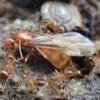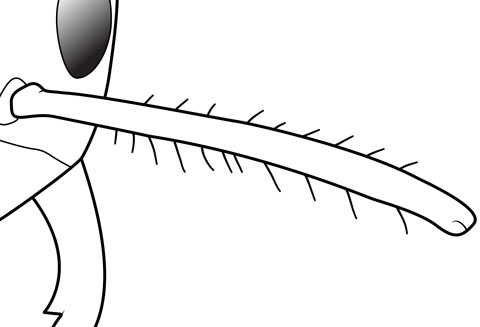It is, in most likelihood, Lasius alienus, since this was collected too early in the year for Lasius neoniger (particularly this far north). Lasius pallitarsis IS present, and less is understood about its nuptial flight schedule, but it is not nearly as common in eastern North America. They are usually not that dark.
Having said that, the diagnostic material is not visible in these photographs. If you can get a good look at the antennal scapes (the antennal segment that attaches to the head), let us know if you see any hairs, if they are sticking straight out, or are simply appressed with the direction of the scape.
Edited by Batspiderfish, January 14 2017 - 8:54 PM.
If you've enjoyed using my expertise and identifications, please do not create undue ecological risk by releasing your ants. The environment which we keep our pet insects is alien and oftentimes unsanitary, so ensure that wild populations stay safe by giving your ants the best care you can manage for the rest of their lives, as we must do with any other pet.
Exotic ants are for those who think that vibrant diversity is something you need to pay money to see. It is illegal to transport live ants across state lines.
----
Black lives still matter.

















